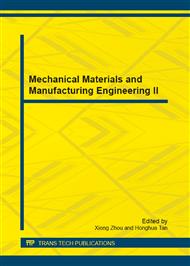p.551
p.555
p.561
p.567
p.573
p.578
p.584
p.589
p.594
Parameters Control for Properties of Ferrofluid Used in Series Ferrofluid Sensor
Abstract:
Series ferrofluid based sensors are novel sensors which use ferrofluid as inductive core to measure signals. The physical properties of ferrofluid affect mostly on performance parameter of these series sensors. There is several generality regularity for ferrofluid appliedd in series sensors. This paper analyses the generality of parameter controlling for properties of ferrofluid used in series ferrofluid sensors. The working area of magnetization curve of ferrofluid used in series sensors should be in its linear area where the permeability of ferrofluid is considered as a constant. The magnetic nano-particles generally obtained by reaction of ferrous chloride and ferric chloride. With the increment of viscosity and density of ferrofluid, the saturation magnetic intensity of ferrofluid increases. The concentration of reacted solution is better to be 0.6mol/L. Saturation magnet intensity of magnetic nano-partcles is highest as the molar ratio of trivalent iron ion to bivalent iron ion is equal to 1.75. The reacted temperature is better between 65~80°C while PH value of solution is in a weak alkaline state.
Info:
Periodical:
Pages:
594-598
Citation:
Online since:
December 2012
Authors:
Keywords:
Price:
Сopyright:
© 2013 Trans Tech Publications Ltd. All Rights Reserved
Share:
Citation:


